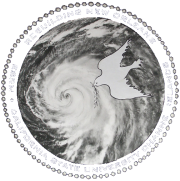Cause of Large Oil Refinery Flare-up
Upon crossing the Mississippi en-route to Mustard Seed Ministries, a large flare burned through the Louisiana sky.
 While burning excess gases from oil production is a common theme in Southern California, I had never witnessed a flare of this magnitude and quite so close to ground level. Yet, this flare was relatively minute in comparison to the large off-gasing that occurred on March 10th.
While burning excess gases from oil production is a common theme in Southern California, I had never witnessed a flare of this magnitude and quite so close to ground level. Yet, this flare was relatively minute in comparison to the large off-gasing that occurred on March 10th.
 To get the full story we visited Mark Schleifstein, Environmental Reporter at NOLA.com, formerly known as The Times Picayune. Mark explained that the source of the flare was the firm Chalmette Refining, LLC. According to Mark, the company claimed to have been performing routine maintenance when the large flare up occurred. In the midst of repairs, one of the compressors malfunctioned shutting down and shunting all gases to one of two emission stacks causing a large eruption of flames into the sky. While by law Chalmette is required to issue a report explaining what the cause of the flare was and what gases where release, the company has yet to do so. In the words of Mark Shchleifstein this behavior by the oil industry constitutes, “just another day in paradise” in Louisiana.
To get the full story we visited Mark Schleifstein, Environmental Reporter at NOLA.com, formerly known as The Times Picayune. Mark explained that the source of the flare was the firm Chalmette Refining, LLC. According to Mark, the company claimed to have been performing routine maintenance when the large flare up occurred. In the midst of repairs, one of the compressors malfunctioned shutting down and shunting all gases to one of two emission stacks causing a large eruption of flames into the sky. While by law Chalmette is required to issue a report explaining what the cause of the flare was and what gases where release, the company has yet to do so. In the words of Mark Shchleifstein this behavior by the oil industry constitutes, “just another day in paradise” in Louisiana.
Link to NOLA.com article and footage of flare up.










